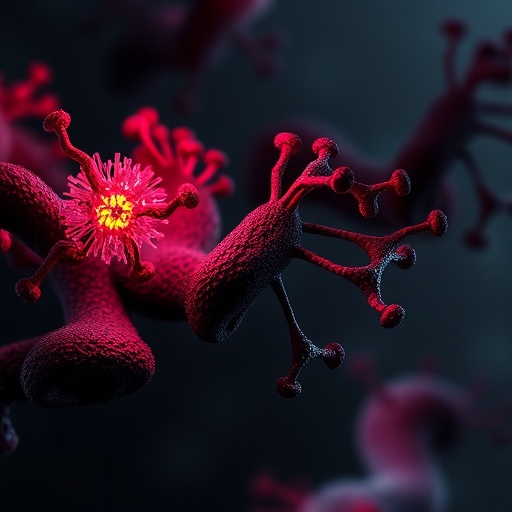Treatment options for patients with CKD are limited and often determined by the aetiology of the CKD. RAAS blockade (ACE inhibitors or angiotensin receptor blockers) has so far been the only therapeutic intervention which has been shown to significantly affect CKD disease progression. However, SGLT2 inhibitors provide a much needed breakthrough in the management of diabetic nephropathy. “We are glad that we now have evidence that we can help our patients with this medication”, explains Professor Carmine Zoccali, President of the ERA-EDTA. “850 million people worldwide are affected by kidney disease- a worrying figure, and one that continues to rise. In about one third of these patients, around 280 million people, diabetes is the cause of kidney failure. For these patients we now have an effective therapy, the CREDENCE study [1] provides evidence that SGLT2 inhibitors add to the armamentarium for the treatment of diabetic nephropathy”
In the double-blind CREDENCE trial patients with type 2 diabetes and chronic kidney disease with albuminuria already on standard renin-angiotensin-aldosterone blockade and baseline diabetic therapy were randomized to receive canagliflozin, an oral SGLT2 inhibitor or placebo. All the patients had an estimated glomerular filtration rate (GFR) of 30 to 300 to 5000). The primary outcome was a composite of end-stage kidney disease (dialysis, transplantation, or a sustained estimated GFR of
The trial had to be stopped earlier than planned, because the study medication showed such an overwhelming beneficial effect. At that time, 4401 patients had undergone randomization, with a median follow-up of 2.62 years. The relative risk of the renal-specific composite of end-stage kidney disease, a doubling of the creatinine level, or death from renal causes was lower by 34% (HR 0.66; 95% CI, 0.53 to 0.81; p
“Many people do not know that patients with chronic kidney disease are at a particularly high risk of many other health outcomes, especially dangerous cardiac complications. It is good to know that there is finally a treatment which not only reduces the risk of becoming dialysis-dependent, but which also results in an improved cardiovascular prognosis and survival”, comments Professor Zoccali.
Only a day before the SONAR study [2] had shown that the risk of renal events in patients with diabetes and chronic kidney disease could be significantly reduced by atrasentan (an endothelin-receptor antagonist) in selected patients (those who had shown a response to the medication before they were enrolled into the study). A risk reduction of 35% in the composite renal outcome of end-stage kidney disease and doubling serum creatinine could be reached (HR; 0.65 [95% CI 0.49-0.88]; p=0.0047).
“All in all these two studies are fantastic news for patients with diabetic nephropathy. For years no new treatment option has proved to be safe and effective and thus no new drug could be introduced into clinical practice. Now we have two new treatments with different therapy targets, which we might even combine.”
###
[1] Perkovic V, Jardine MJ, Neal B et al. Canagliflozin and Renal Outcomes in Type 2 Diabetes and Nephropathy. New England Journal of Medicine 2019; 15 Apr. [epub ahead of print]; DOI: 10.1056/NEJMoa1811744
[2] Heerspink HJL, Parving HH, Andress DL et al. Atrasentan and renal events in patients with type 2 diabetes and chronic kidney disease (SONAR): a double-blind, randomised, placebo-controlled trial. The Lancet 2019; 14 Apr [epub ahead of print]; DOI:https:/
About ERA-EDTA
With more than 11,000 members, the ERA-EDTA (“European Renal Association – European Dialysis and Transplant Association”) is one of the biggest nephrology associations worldwide and one of the most important and prestigious European Medical Associations. It supports basic and clinical research in the fields of clinical nephrology, dialysis, renal transplantation and related subjects. It also supports a number of studies as well as research groups and has founded a special “Fellowship Programme” for young investigators as well as grant programmes. In order to involve young nephrologists in all its activities, ERA-EDTA has created the “Young Nephrologists’ Platform” (YNP), a very active committee whose board includes members who are 40 years old or younger. In addition, it has established various working groups to promote the collaboration of nephrologists with other medical disciplines (e.g. cardiology, immunology). Furthermore, a “European Renal Best Practice” (ERBP) advisory board was established by the ERA-EDTA to draw up and publish guidelines and position statements. Another important goal of the ERA-EDTA is education: The series of CME courses combined with the annual congress offer an attractive scientific programme to cover the need for continuous medical education for doctors working in the fields of nephrology, dialysis and transplantation. The association’s journals, NDT (Nephrology, Dialysis, Transplantation) and CKJ (Clinical Kidney Journal), are currently the leading nephrology journals in Europe; furthermore NDT-Educational is the Society’s online educational journal , with free access for all users, as well as being a very important and useful feature of the NDT-Educational “Literature Review”. The ERA-EDTA Registry is a large epidemiologic database comparing countries by assessing nephrology practices throughout Europe. ENP, the European Nephrology Portal, is the latest new initiative of ERA-EDTA, where all those interested in the activities of the Society can find everything that is happening, all in one place. Finally, ERA-EDTA is a member of the European Kidney Health Alliance (EKHA), a consortium of patients, nurses and foundations relating to renal issues that actively interacts with the European Parliament. For more information, please visit http://www.
Media Contact
Dr. Bettina Albers
[email protected]
http://dx.




